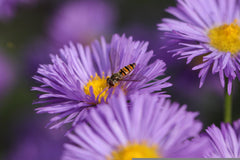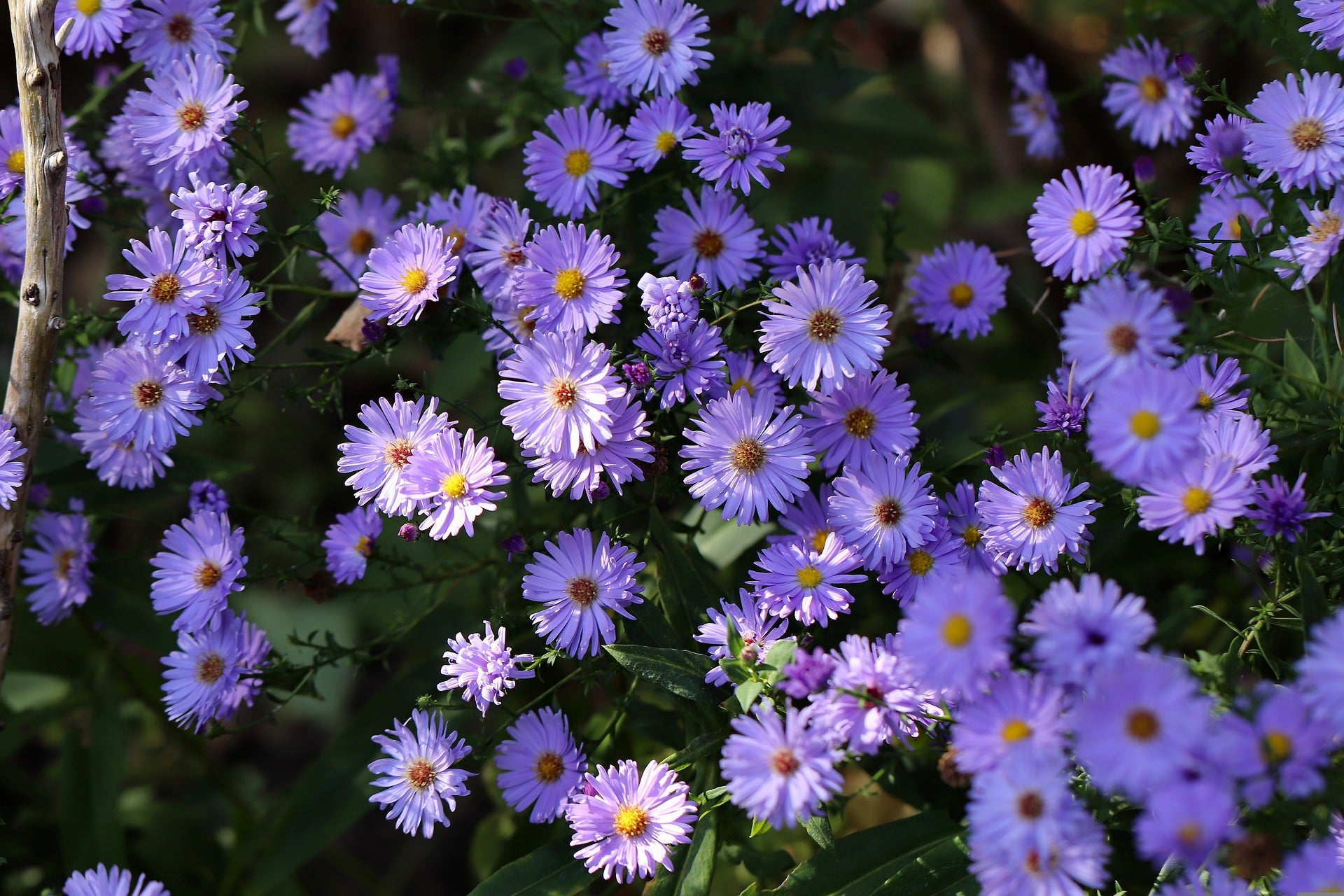Asters are composite star-shaped fall flowers that bloom anywhere from mid-August into October. Colors can range from white to pink and blue to purple. They are a very important late-season supply of nectar for pollinators.
Asters are hardy from zones 3-8 and can grow from 8 inches to 8 feet tall and 8 inches to 4 feet wide depending on the variety. There are over 180 varieties of Asters. When DNA studies were done, many of our commonly called asters were put in the classification of Symphyotrichum.

In the warmer south, Asters will perform better if protected from the hot, intense mid-day sun. They flower best in the sun unless one of the woodland Asters. They like loamy soil and water during a drought.
If they are getting too tall pinch off the leaders and they will stay shorter and not fall over as the taller ones often do. They flower best if divided every 2-3 years. Just lift the entire plant and divide into 2-3 smaller clumps. If you allow your Asters to seed, the flower color may not be the same as the original plant.
One of the health issues that Asters develop, is they grow so thick they develop powdery mildew in the mid-Atlantic area. Keep them open with good air circulation to help with this issue.
Many of the later blooming ones are frost-hardy and will continue to hold color well after the first frost.
In winter, finches and chickadees rely on aster seeds as a food source. You can watch them hunt in the debris around asters for larva as well.
Fertilize in spring only, as they set flowers in the fall in response to shorter days. You do not want them to be pushing leaves going in fall.
Asters are a tough and reliable plant for the garden offering late season color and they are a late source for wildlife food.

























